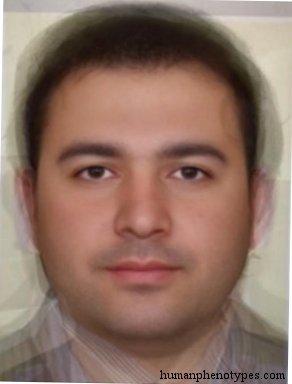Description
West Asian type that is anthropometrically and morphologically very similar to European Alpinids. Most common in the mountain zones of Anatolia, to Northern Syria and Iraq. Also found in West Iran, Caucasus, Palestine, and Lebanon. Extends in lower frequencies up to Tajikistan, across Arabia and to Southwestern Europe. The type can easily be confused with similar looking Turanid-admixed individuals.
Physical Traits
Height: Medium to rather tall
Build: Mesoskelic, endomorph
Skull: Brachycephalic, ortho-hypsicranic
Face: Round
Nose: Leptorrhine with roundish tip
Mouth: Rather thin
Skin: Light brown
Hair: Straight or wavy, light brown to black
Light brown skin, straight or wavy hair ranging from light brown to black. Medium height to rather tall, with mesoskelic proportions and endomorphic build. Brachycephalic skull shape with ortho-hypsicranic vault. The face is round with a leptorrhine nose featuring a roundish tip. The mouth is rather thin. The skin is slightly darker than in their European counterparts, and the height is slightly taller.
Literature References
The term East Alpinid was originally used by Senyürek (1950) to describe Anatolian Alpinids. It was later adopted by Eickstedt (1961). Coon (1939) called them Asiatic Alpines. Field (1939, 1946) describes the type from Iran and Iraq and calls it Proto Alpine, Gloor (1951) finds it in Palestine. Lundman (1967) uses East Alpinid synonymous with Gorid, a different variety.
- Senyürek (1950) - First use of "East Alpinid" term for Anatolian Alpinids
- Eickstedt (1961) - Adopted East Alpinid terminology
- Coon (1939) - Asiatic Alpines
- Field (1939, 1946) - Proto Alpine from Iran and Iraq
- Gloor (1951) - Description from Palestine
- Lundman (1967) - East Alpinid synonymous with Gorid







